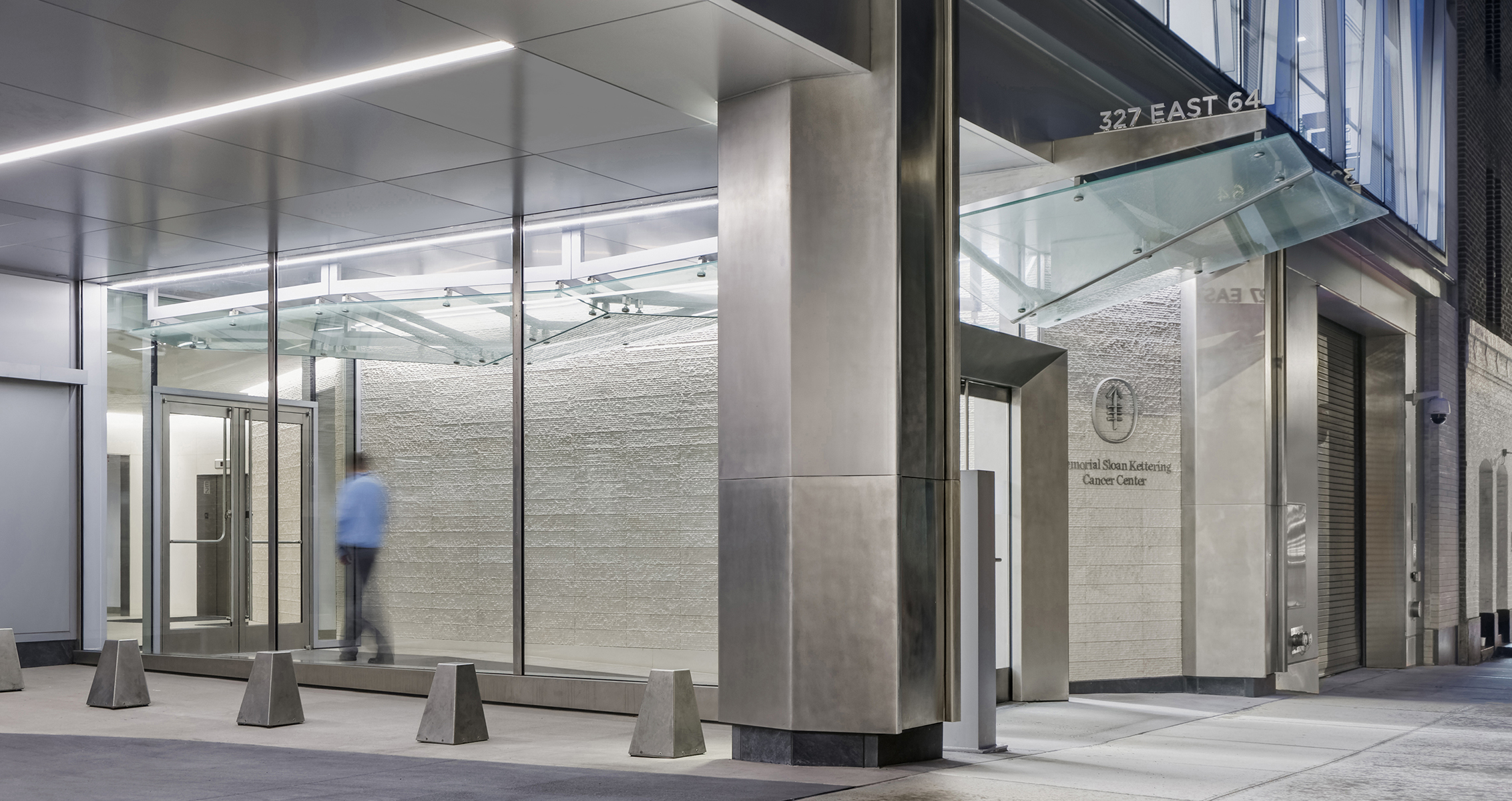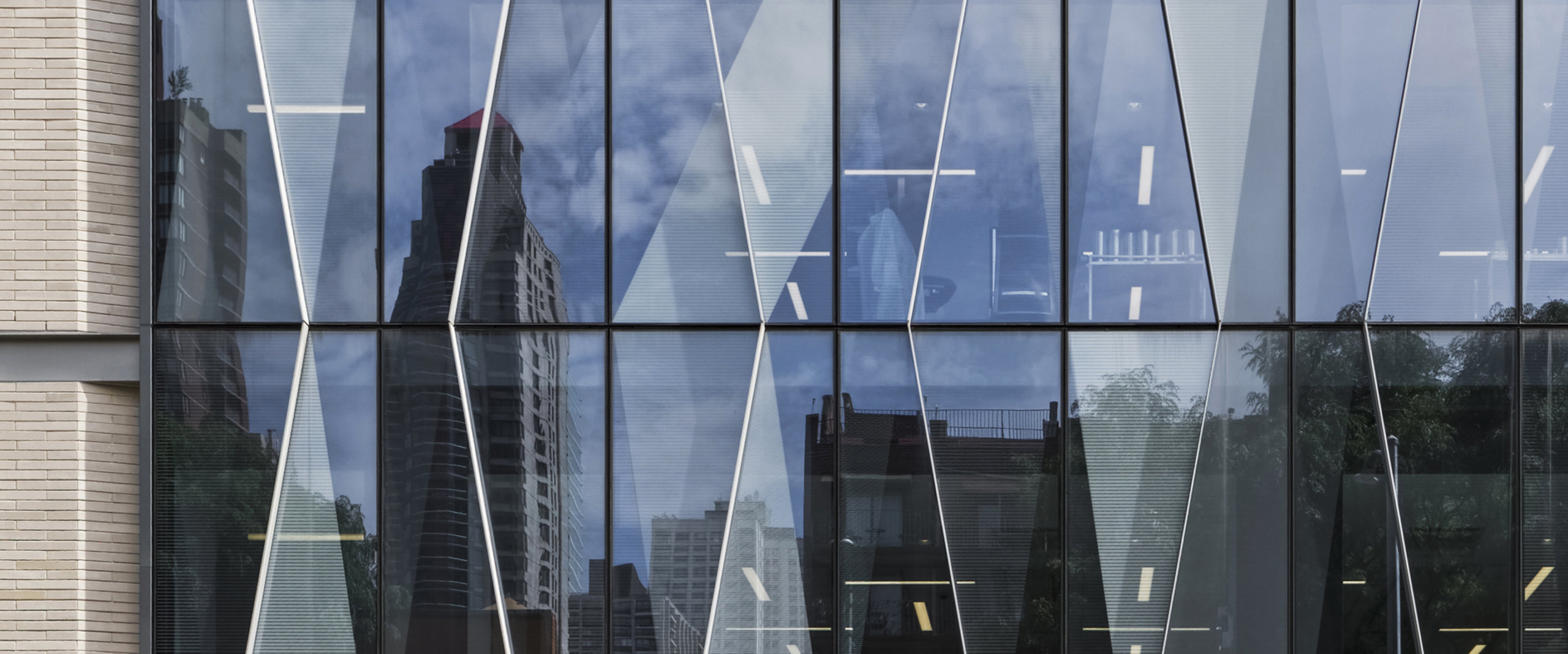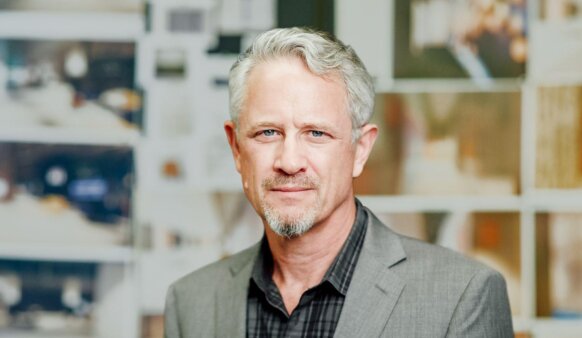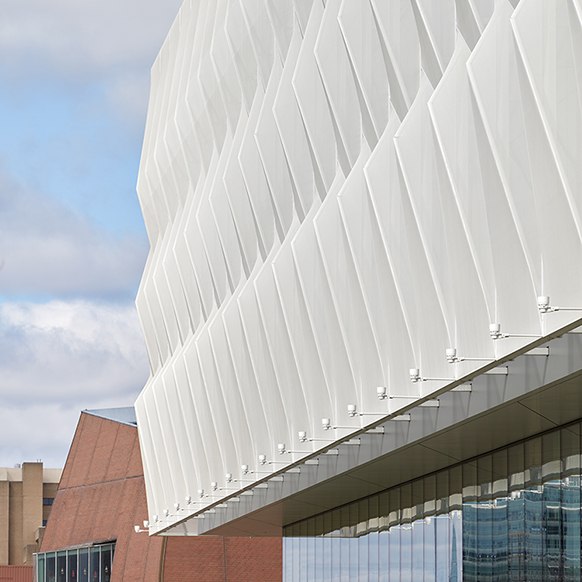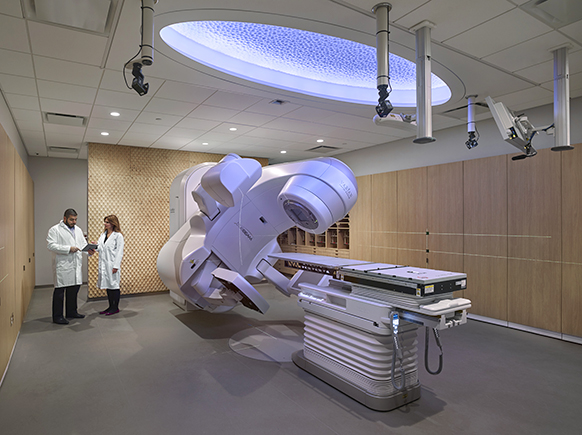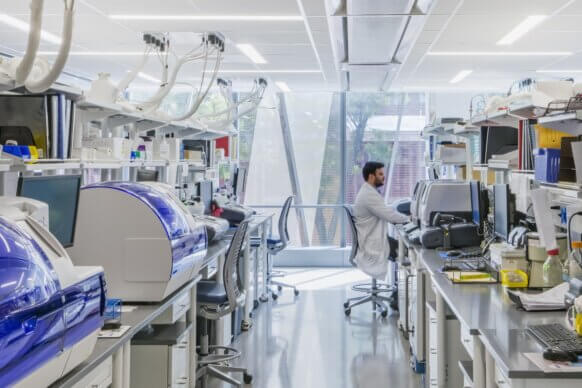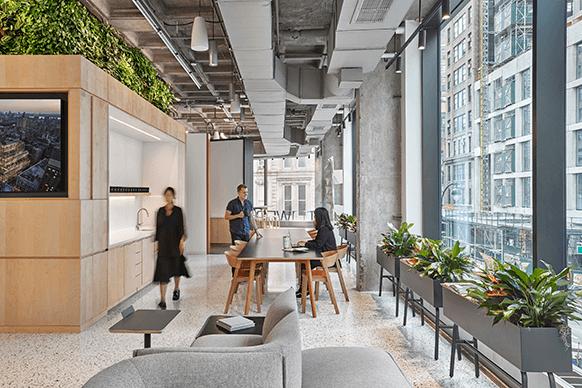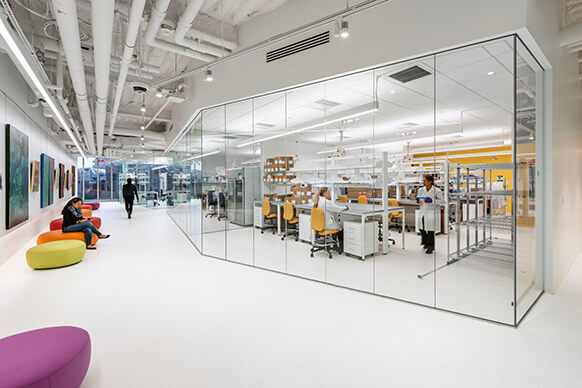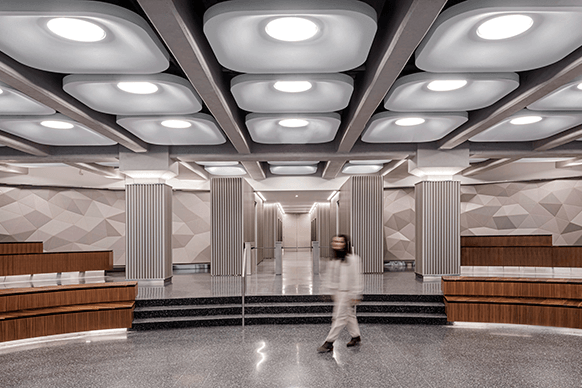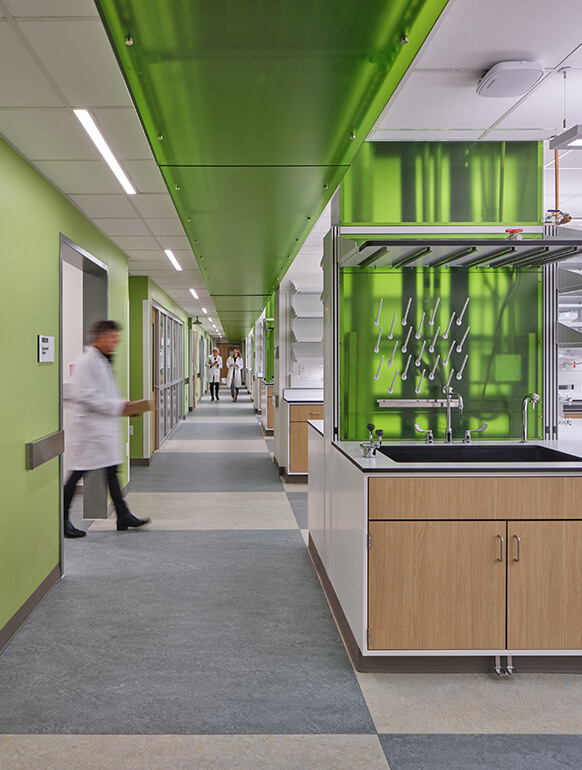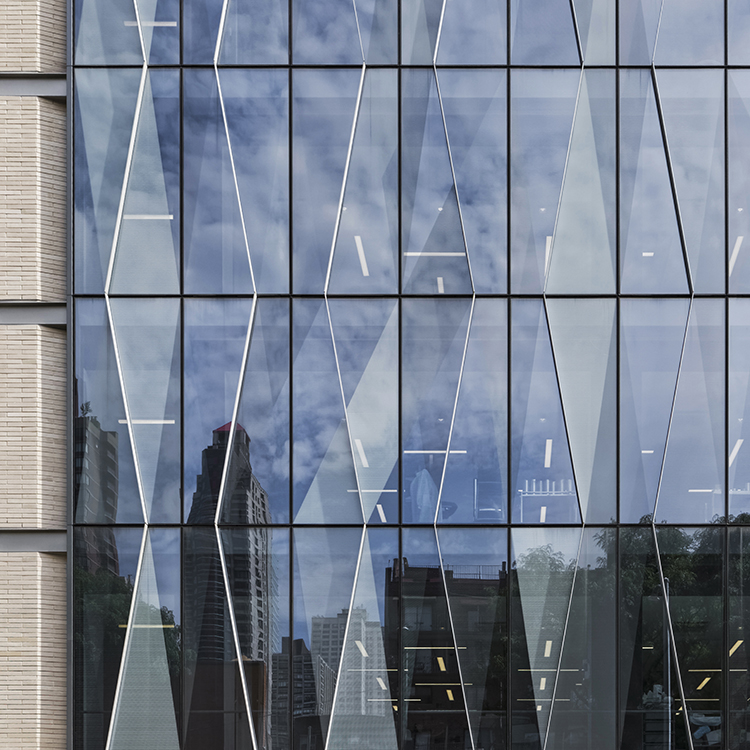
Memorial Sloan Kettering Cancer Center Laboratory Medicine Building
Demand in recent years for advanced cancer treatment services has increased Memorial Sloan Kettering Cancer Center’s patient volume, therefore nearly doubling the need for laboratory testing services. This increase led MSKCC to select a site for a new, state-of-the-art laboratory that would co-locate several non-production clinical laboratories under one roof with sustainability and efficiency at the core.
We worked extensively with the clinical users during the planning phases to identify efficiencies in their workflow and compact the layout of equipment and tools to save time, increase accuracy, and create maximum flexibility and ease of lab reconfiguration in the future.
The result is an efficient, yet supportive environment that increases interaction, but offers moments of respite for its inhabitants with access to natural light for comfort and wellness. Laboratory services performed at the facility include specialized testing in hematology/hemostasis, clinical chemistry, and microbiology.
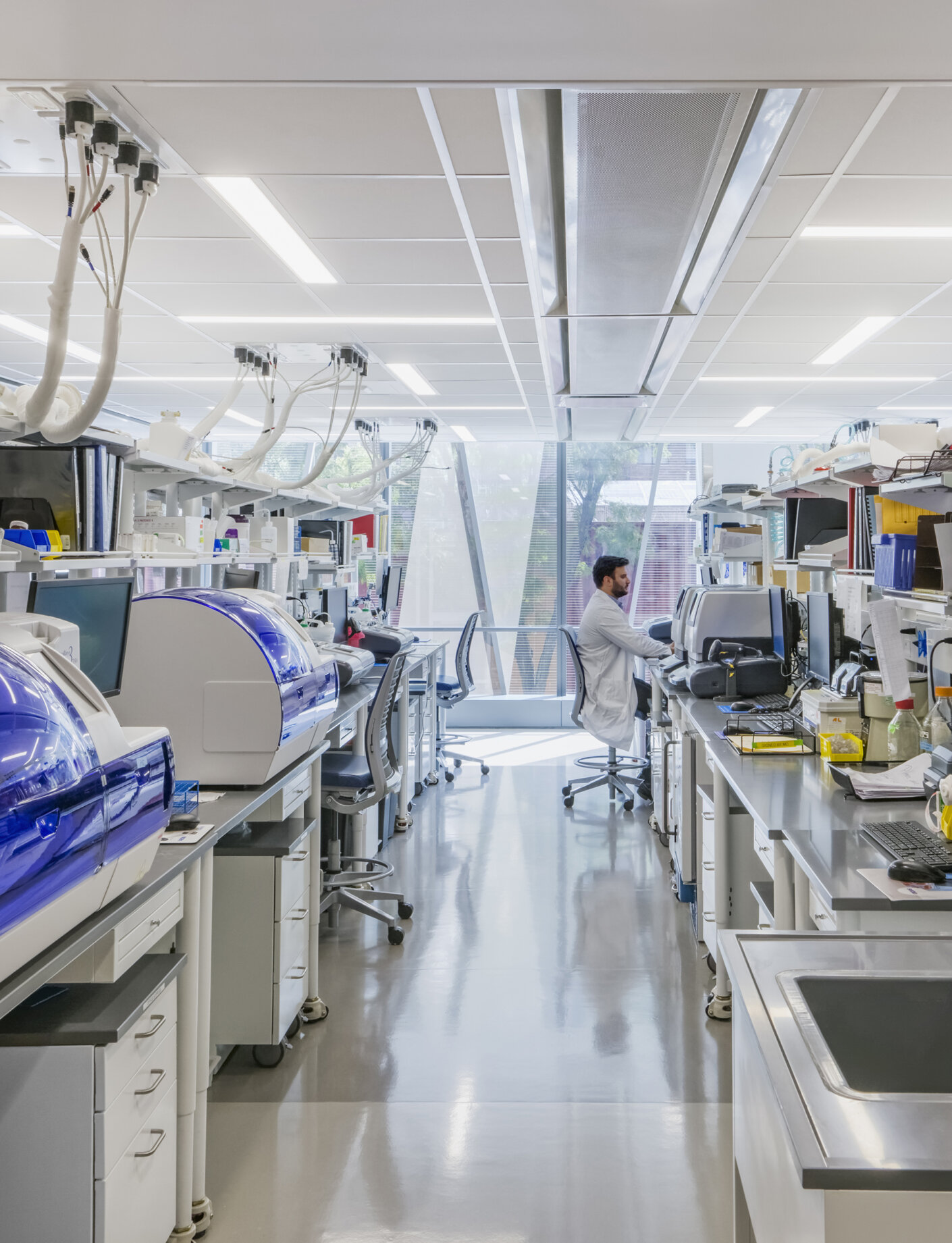
Sustainable clinical laboratory serving as a template for future MSKCC labs with its future-proof layout, open lab environments, and garden terraces respite areas.
The project sets a new precedent for sustainable initiatives within the MSKCC organization, and high-performance systems were prioritized. Mechanical systems are designed to meet LEED Gold energy performance at a minimum, with the potential to achieve Platinum status. The façade is designed to balance providing access to natural daylight with an innovative shading system to improve energy performance. Roofing systems incorporate both green roof technologies for enhanced water performance and high albedo systems to minimize building heat loads while reduce “heat island” effects.
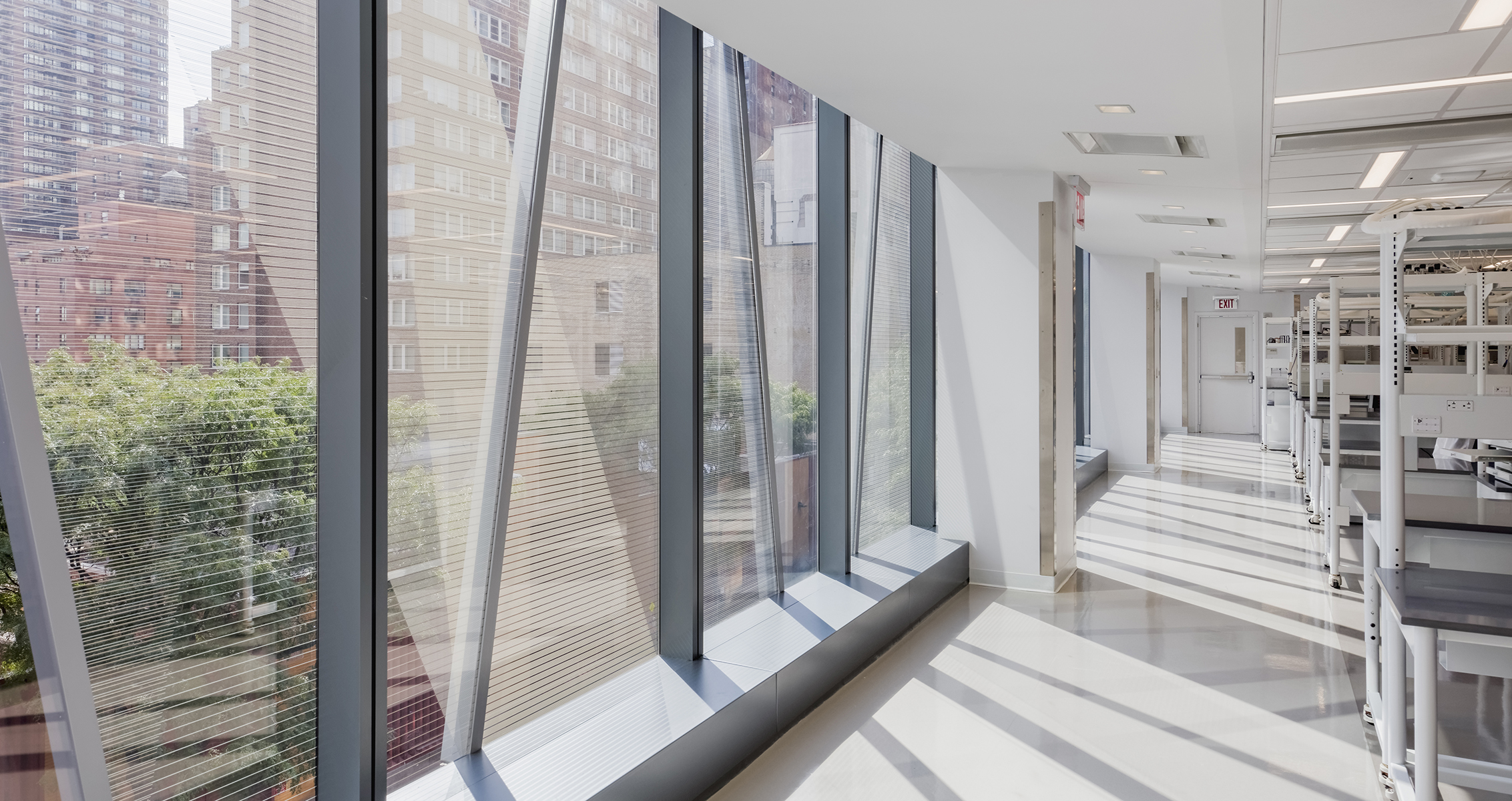
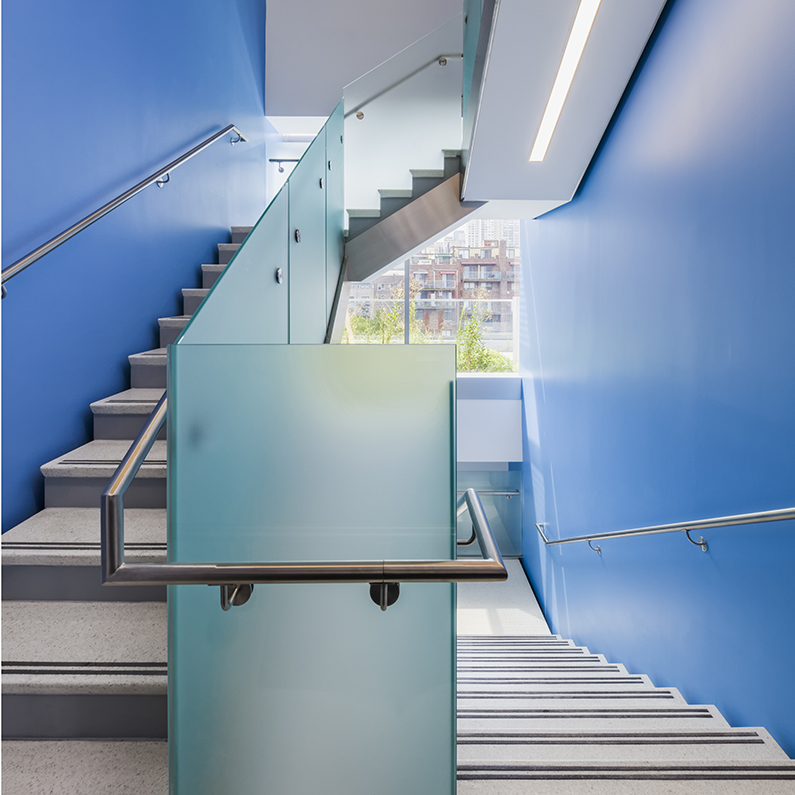
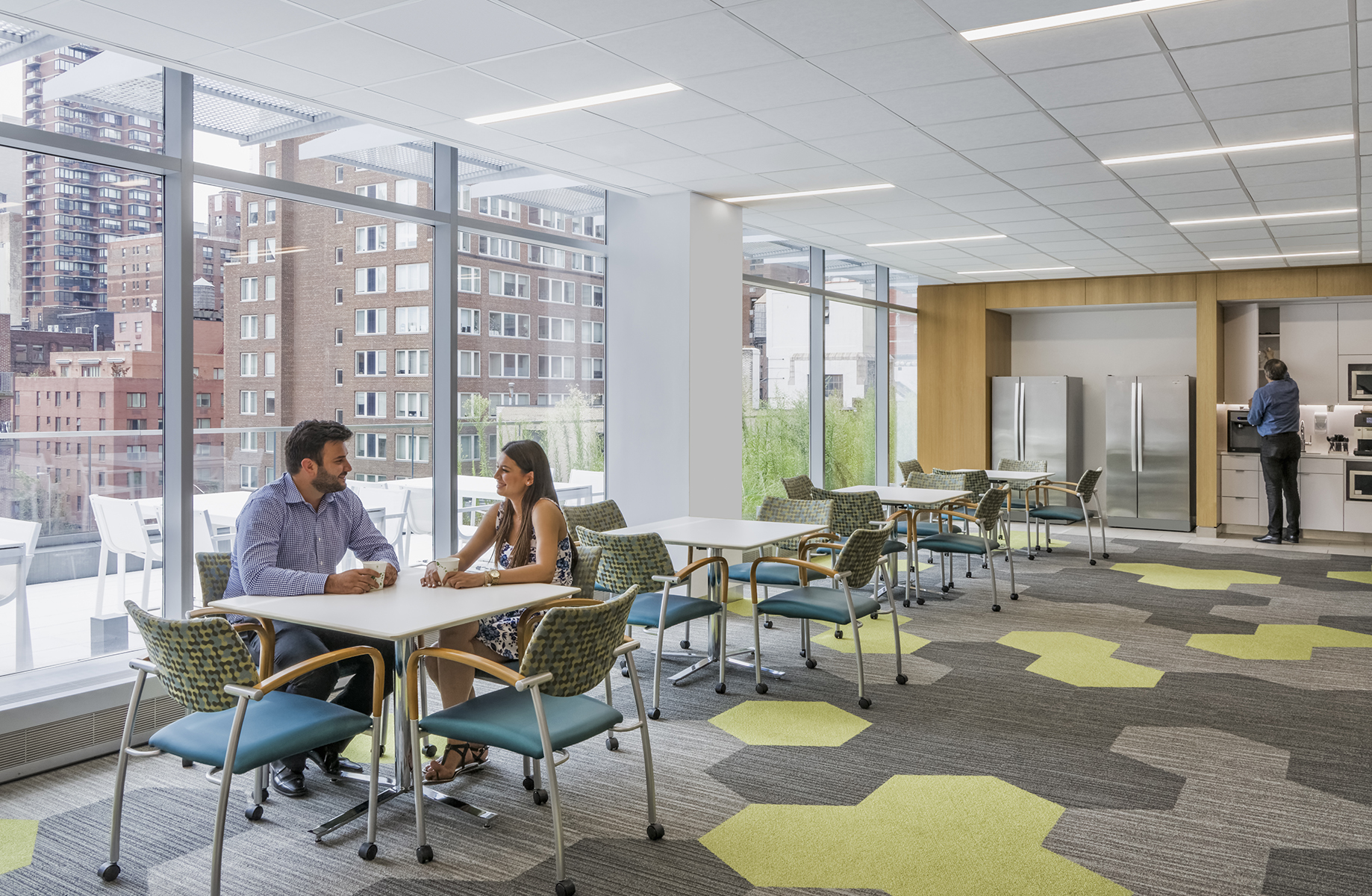
Utilities such as power, data, and gases are provided on a regular grid on the ceiling and integrated into each movable laboratory bench, so as groups grow and change, reconfigurations can happen with minimal impact and disruption to ongoing operations. And a non-directional lighting layout permits benches to be configured in any orientation without shadowing or impacting light levels on the work surface.
